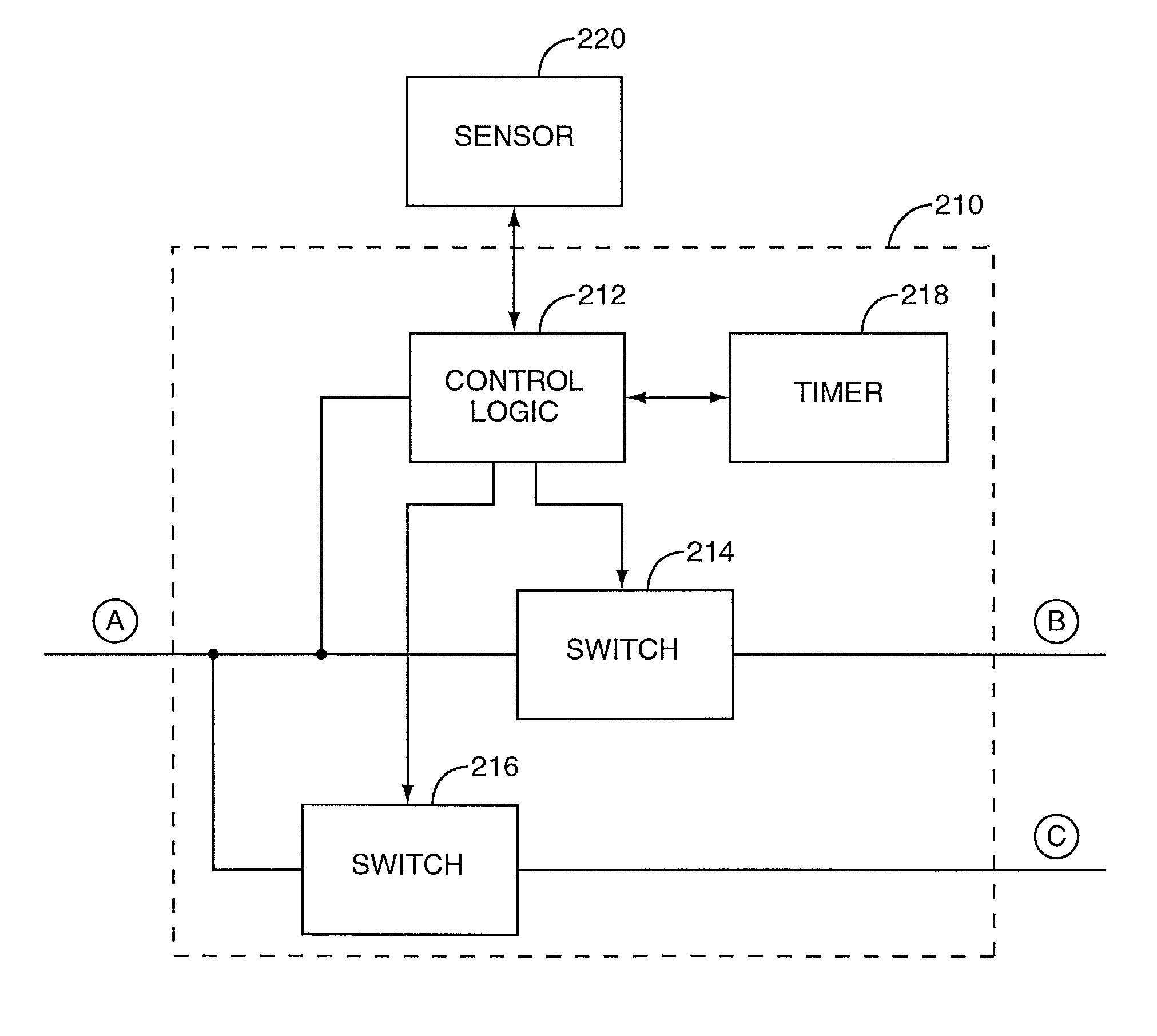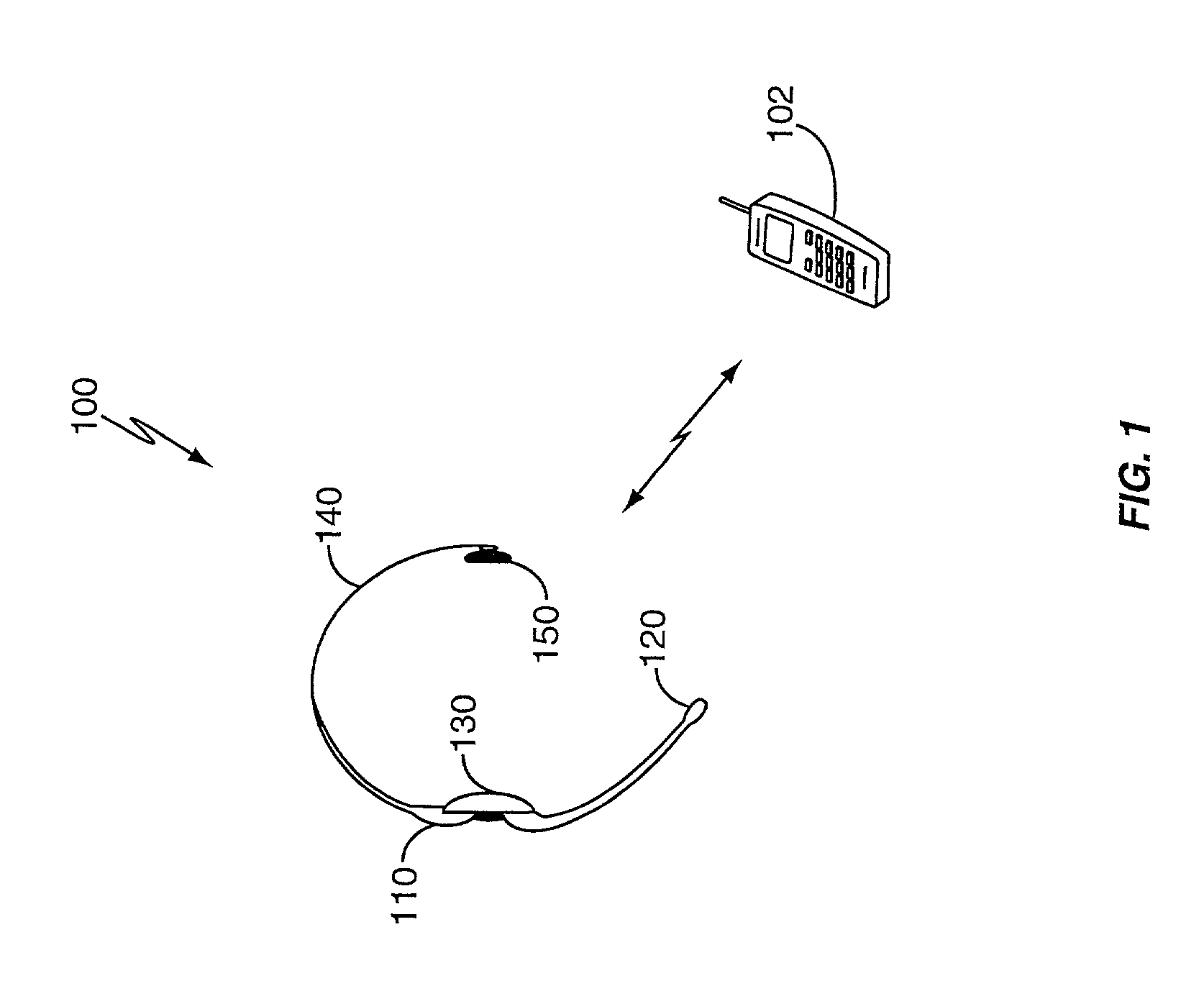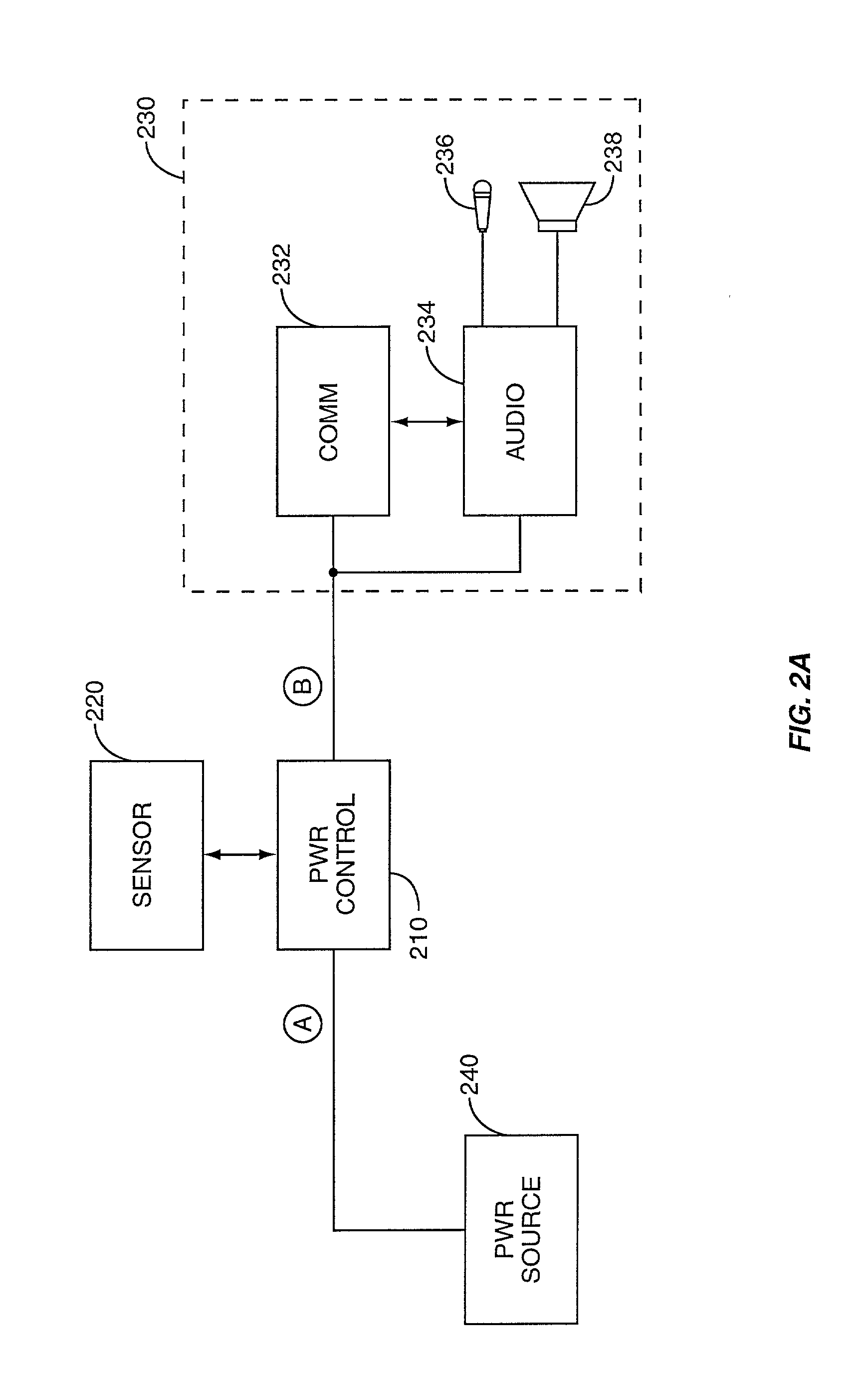Wireless headset with automatic power control
a wireless headset and power control technology, applied in the field of communication headsets, can solve the problems of reducing the relative size of the on-off switch used by the designer with the decreasing size of the newer generation headset, affecting the design of small but reliable and convenient headsets, and presenting twofold switches. , to achieve the effect of maximizing the life of the power source, minimizing power consumption, and no power
- Summary
- Abstract
- Description
- Claims
- Application Information
AI Technical Summary
Benefits of technology
Problems solved by technology
Method used
Image
Examples
Embodiment Construction
[0024]FIG. 1 illustrates one embodiment of the wireless headset 100 of the present invention. A user may advantageously use the wireless headset 100 for more convenient, hands-free interaction with the base unit 102. As noted, the base unit 102 may be any type of device supporting interactive communications with a user. Commonly, the base unit 102 will be a communications device, such as a mobile terminal. The basic elements of the wireless headset 100 include a microphone pickup 120 for audio input, an earpiece 130 for audio output, a primary enclosure 110, and a retaining member 140 with pad 150 to aid in securing the wireless headset 100 to the user's head. Notably, FIG. 1 represents an exemplary configuration for the wireless headset 100. The physical configuration shown in FIG. 1 is a common configuration for wireless headsets. However, other configurations are possible. Those skilled in the art will appreciate that the physical configuration of the headset is not a material as...
PUM
 Login to View More
Login to View More Abstract
Description
Claims
Application Information
 Login to View More
Login to View More - R&D
- Intellectual Property
- Life Sciences
- Materials
- Tech Scout
- Unparalleled Data Quality
- Higher Quality Content
- 60% Fewer Hallucinations
Browse by: Latest US Patents, China's latest patents, Technical Efficacy Thesaurus, Application Domain, Technology Topic, Popular Technical Reports.
© 2025 PatSnap. All rights reserved.Legal|Privacy policy|Modern Slavery Act Transparency Statement|Sitemap|About US| Contact US: help@patsnap.com



